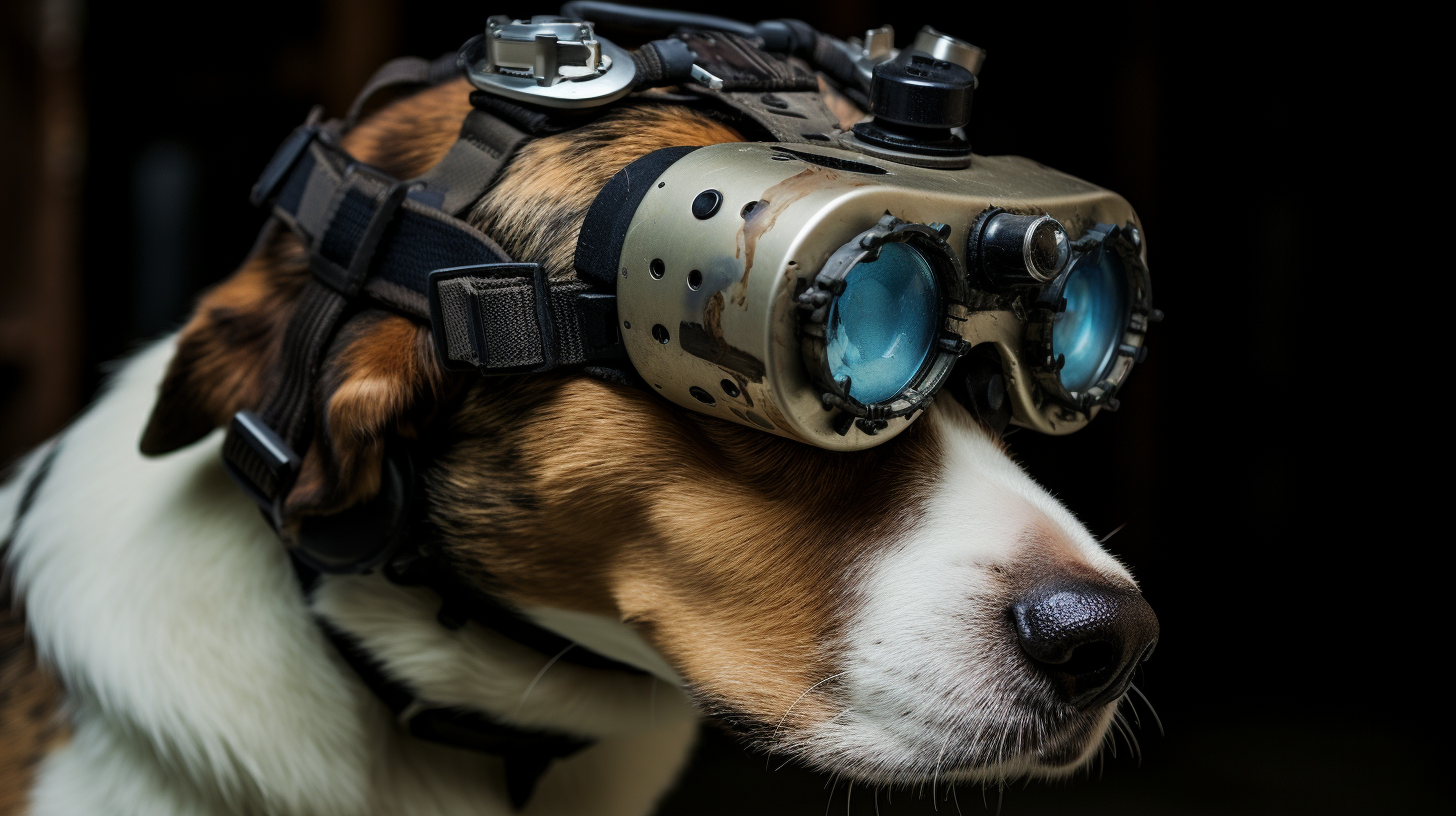In the ever-evolving landscape of the Canine Republic, technological innovation isn't just limited to the latest in chew-toy gadgetry or the newest version of the BarkPhone. It's permeating deeper, significantly transforming sectors inherently vital to social welfare; case in point – the world of rescue missions.
Gone are the days when a simple game of fetch or tug-of-war prepared our hero hounds for the complexities of a rescue mission. Today, they are equipped with tools and tech that would make even the most sophisticated spy wag their tail in approval.
Digging Deeper with Drones: Harnessing the eagle-eye views provided by drone technology, search and rescue teams are now able to scout vast areas within minutes. Teams on the ground are directed with pinpoint accuracy to potential survivors, drastically reducing search times in large-scale disasters.
Wearable Widgets for Whiskered Workers: Collars aren’t just fashion statements anymore; they’re lifelines. With GPS locators, health-monitoring biometrics, and cameras, our four-legged friends are safer and more connected than ever. These intelligent devices allow command centers to monitor the well-being and location of each rescue dog, ensuring that no pup is left behind.
Virtual Reality Training Tails: VR environments can simulate disaster scenarios from earthquakes to floods—testing the fluff out of our rescue dogs in rehearsal before they confront reality. These programs enhance their problem-solving skills and reduce the time needed to acclimate to chaotic scenes.
Sniff Sensors Sniffing Out Success: Building upon the advancements discussed in our prior issue with ‘Trailblazing Tails: How Rescue Dogs Are Saving Lives’, the olfactory prowess of our canine comrades is being amplified. The ‘nose knows’, as they say, and with the new and improved Sniff Sensor 3000, it knows even more. The upgraded sensor can identify a range of scents—from human pheromones to natural gas leaks—and its findings are relayed in real-time back to the rescue coordi-paw-tion center.
The AI Pawspective: Artificial intelligence has made headway into our rescue ecosystems, offering predictive analytics that inform rescue teams about the likelihood of survivor presence. With machine learning, these AI systems are constantly improving, helping make tough calls in split-second situations.
Integration with the Pooch Protectors is a major leap forward. Propelled by the spirit of camaraderie, our rescue teams and tech innovators collaborate to create the safest, most effective response initiatives possible. This network now incorporates drones, wearable tech, and AI to bolster the bravery and skill of our furry heroes, as they bark bravely onto uncertain terrains.
Uncertainty will always trail the heels of progress, and questions paw at our curiosity. How will these technologies fare in the face of Mother Nature’s unpredictability? What are the ethical considerations of such extensive biometric collaring? Yet, the future bounds ahead with a wet nose and a wagging tail, eager to explore and expand the boundaries of pawsible.
What was once the stuff of science fiction is now yapping joyously at our doorstep, asking for a well-deserved belly rub of recognition. As we watch our valiant hounds adorn their gadgets with pride, we too, swell with pride at the pawsibilities that lie ahead.
As we continue to chronicle these remarkable advancements, one thought remains steadfast in our minds: the future of rescue is now, and it’s absolutely howl-worthy.
